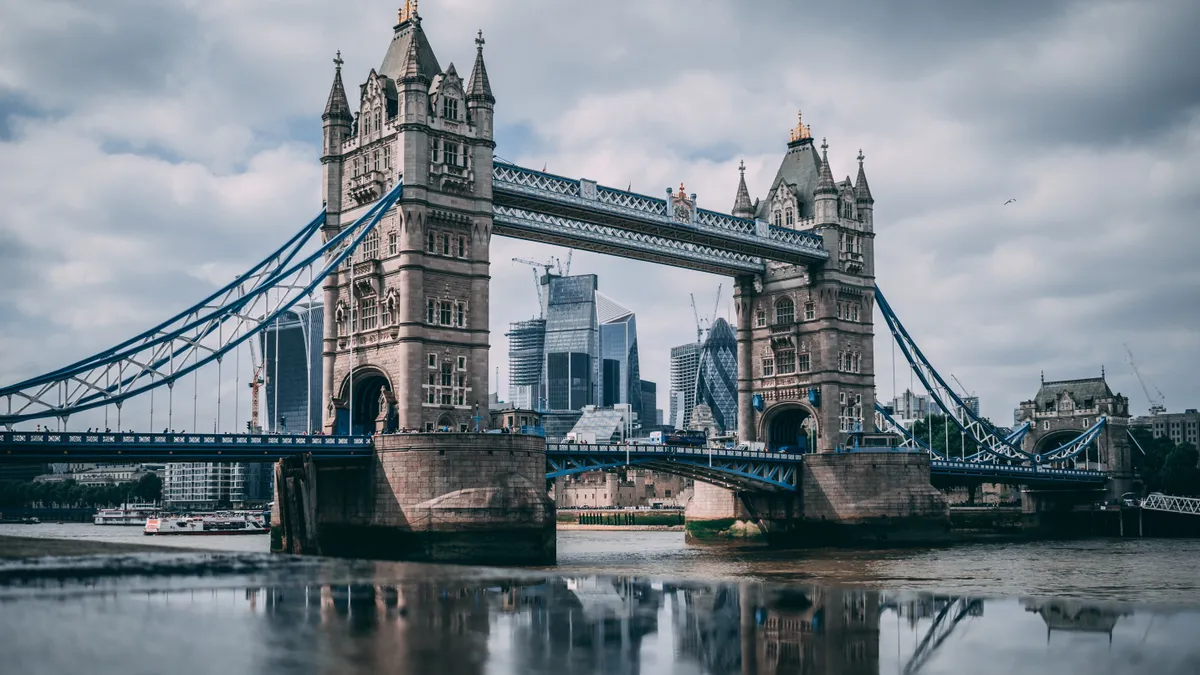Dive Brief:
- The Royal Bank of Scotland revealed plans Friday to rebrand its corporate parent to NatWest Group PLC. Ditching the 293-year-old company name marks an attempt by the bank to distance itself from the reputational blow it suffered during the 2007-08 crisis, when British taxpayers were forced to shoulder a 45 billion-pound ($59.3 billion) bailout. The bank is still 62% government-owned, according to The Guardian.
- The bank also vowed Friday to stop making loans and underwriting debt for major oil and gas companies and firms with more than 15% of activities related to coal, unless they have credible transition plans in place by the end of 2021, to align with the Paris climate agreement’s global temperature goals.
- Both announcements came as the bank revealed its annual earnings, which indicated a 77% increase in net profit compared with the previous year, according to The Wall Street Journal. Revenue, meanwhile, jumped 6%.
Dive Insight:
The name change serves as confirmation that NatWest, which the Royal Bank of Scotland bought in 2000, has been the bank’s primary focus and dominant brand. Branches in England have gone by the NatWest name since the acquisition. Branches in Scotland are expected to retain the RBS name after the rebranding kicks in.
The Royal Bank of Scotland saw intense expansion across three continents in the 2000s under previous CEO Fred Goodwin before reporting a 24.1 billion-pound annual loss that culminated in the bailout. Now the bank is looking to turn the page.
"We have exited a lot of the international business that was not profitable, and all of that was branded RBS, but that’s now gone," Royal Bank of Scotland Chairman Howard Davies said, according to The Wall Street Journal. "So it really makes no sense for us to continue to be called RBS, which was a concept designed for a global group of banks which we don’t any longer have."
2019 marked the third consecutive profitable year for RBS since the bailout, according to The Guardian. Despite the upswing, new CEO Alison Rose was widely expected to reveal job losses Friday but did not disclose how many bank branches or employees would be downsized in a cost-cutting plan meant to save the bank 250 million pounds this year.
Perhaps the most impactful change for the bank is its environmental strategy. The bank said it will cut the net greenhouse-gas emissions of its operations to zero this year and will be "climate positive" by 2025, when the company will capture more carbon than it emits, Bloomberg reported.
The bank plans to fully phase out coal financing by 2030 and has pledged to double its funding and financing for climate and sustainable finance to 20 billion pounds by 2022.
The bank’s footprint in regard to oil, gas and coal companies is a fraction of its peers', standing at 6 billion pounds. At Barclays, by comparison, lending and underwriting to carbon-intensive companies and projects totaled 64 billion pounds between 2015 and 2018, according to a Rainforest Action Network study cited by The Guardian.
"On our balance sheet, only 1% of our lending is to the oil and gas sector, and in coal it’s marginal, down at 0.3%," Rose said, according to the publication. "But, for me, the key message here is we’re all going to need to work together; no one organisation is going to solve the climate challenge on their own and we’re very keen to work with business, with regulators, with industry to help make the plans to transition over the next 10 years."
Rose, who took over as CEO in November after working with the bank for 25 years, is the first woman at the helm of one of London’s four largest lenders.














